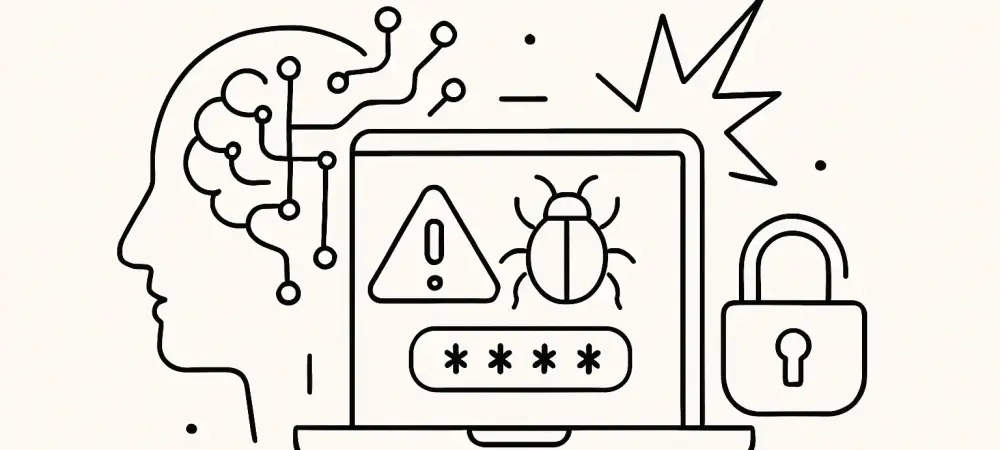I’m thrilled to sit down with Dominic Jainy, an IT professional whose deep expertise in artificial intelligence, machine learning, and blockchain has made him a leading voice in the intersection of technology and cybersecurity. With a passion for exploring how these cutting-edge fields impact industries worldwide, Dominic offers unique insights into the growing risks of AI-related data breaches, the staggering costs of cyber incidents, and the unexpected ways social media plays into professional opportunities. In our conversation, we dive into the challenges companies face in managing AI adoption, the evolving landscape of data breach response, and the delicate balance individuals must strike with their online presence. Let’s get started.
How does the rapid adoption of AI without proper oversight create vulnerabilities for companies, based on recent findings?
The rush to integrate AI into business operations often outpaces the development of security measures. Recent reports, like the one from IBM, highlight that 16% of data breaches last year involved AI tools. This shows how quickly threat actors are exploiting gaps in oversight. Without strict controls, AI can become a gateway for attackers, especially when employees use unapproved tools that IT teams aren’t even aware of. It’s a classic case of innovation moving faster than governance, and companies are paying the price for it.
What are some reasons employees might turn to unsanctioned AI tools on work devices, and how widespread do you think this issue is?
Employees often use unapproved AI tools out of convenience or necessity—think of someone using a public chatbot to draft a quick report because it’s faster than waiting for internal resources. The problem is, these tools can expose sensitive data. IBM’s data shows 20% of organizations faced breaches due to this behavior, and I’d wager it’s even more common than reported. Many employees don’t realize the risks, and without clear policies or training, they’ll keep taking shortcuts that jeopardize security.
What are the most critical steps organizations can take to secure AI usage and prevent breaches?
First, companies need access controls—97% of organizations hit by AI-related breaches lacked these, which is staggering. This means restricting who can use AI tools and monitoring how they’re used. Second, implementing a robust AI governance policy is non-negotiable. That includes defining approved tools, setting data usage limits, and regularly auditing systems. Finally, training staff to understand the risks of unsanctioned tools can close a major gap. It’s about building a culture of security alongside innovation.
Why do you think the cost of data breaches in the US is so much higher than the global average, reaching over $10 million per incident?
The US faces a unique combination of factors. We have a highly digitized economy, meaning more data to steal and more complex systems to breach. Regulatory fines, like those under laws such as HIPAA, hit hard here. Plus, legal costs and consumer lawsuits are more aggressive compared to other regions. The global average is around $4.44 million, but in the US, you’re dealing with a $10.22 million price tag because of these amplified consequences. It’s a wake-up call for prioritizing prevention over reaction.
Healthcare data breaches remain incredibly expensive despite a drop in costs. What makes this sector such a prime target?
Healthcare is a goldmine for hackers because personal health data is incredibly valuable on the black market—think identity theft, insurance fraud, or even blackmail. Even though costs dropped to $7.42 million per breach from last year’s higher figure, the stakes are still enormous. These organizations often lag in cybersecurity due to budget constraints or outdated systems, making them easy targets. Plus, the sensitive nature of the data means breaches have severe legal and reputational fallout, driving up costs.
Companies are detecting and resolving breaches faster than before. What approaches or technologies are likely behind this improvement?
The drop from 258 to 241 days in breach lifecycle is promising, and I believe AI is a big player here. Machine learning algorithms can analyze network traffic in real time, flagging anomalies before they escalate. More companies are also investing in proactive monitoring rather than waiting for attackers to reveal a breach. Improved incident response plans and better training for staff are helping too. It’s a shift from reactive to preventive strategies, which saves time and money in the long run.
Turning to social media, why do you think employers are increasingly scrutinizing online profiles during hiring processes?
Employers look at social media to get a fuller picture of candidates beyond resumes. They’re curious about personality, values, and even potential red flags like unprofessional behavior. It’s also about authenticity—AI-driven scams have led to fake identities, so they’re checking if you’re a real person with a consistent online presence. Social media offers a window into how someone communicates and interacts, which can be just as telling as their professional qualifications.
How can scrubbing or hiding social media profiles unintentionally harm someone’s job prospects?
Erasing or locking down profiles can make you seem secretive or inauthentic to employers. Some use AI tools to verify candidates by checking account age or activity levels, and a blank slate might raise suspicions that you’re hiding something—or worse, that you’re not a real person. It’s a Catch-22: leaving up controversial posts can hurt you, but wiping everything clean can signal a lack of transparency. Balance is key, curating your presence rather than erasing it.
What is your forecast for the future of AI in cybersecurity, both as a tool for defense and a potential risk?
I see AI becoming a double-edged sword in cybersecurity over the next decade. On one hand, it’ll revolutionize defense—think predictive threat detection and automated response systems that stop breaches before they spread. On the other, attackers will weaponize AI to craft smarter phishing schemes or exploit vulnerabilities faster than humans can respond. The race will be about who controls AI better: defenders building stronger walls or attackers finding new ways to break them. Companies that invest in governance now will be the ones standing strong later.

